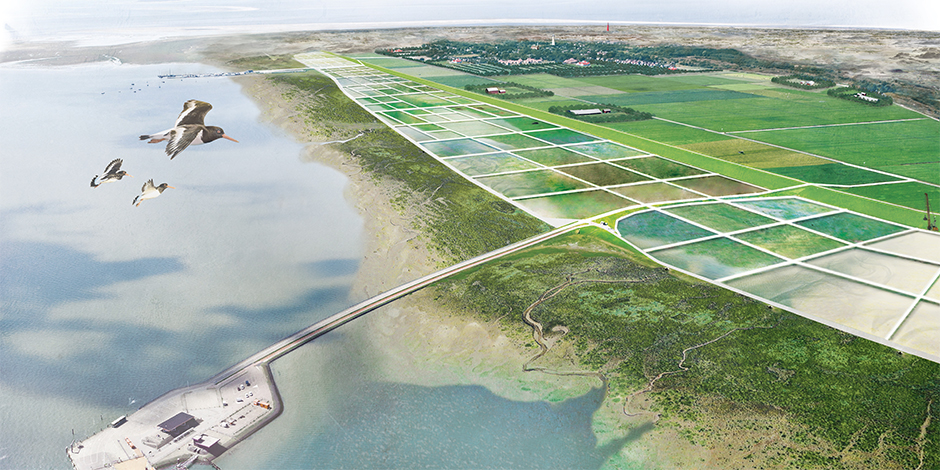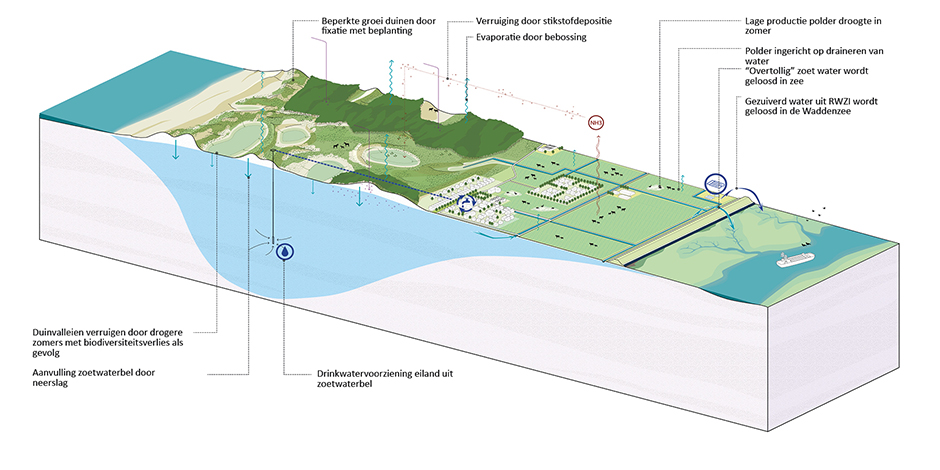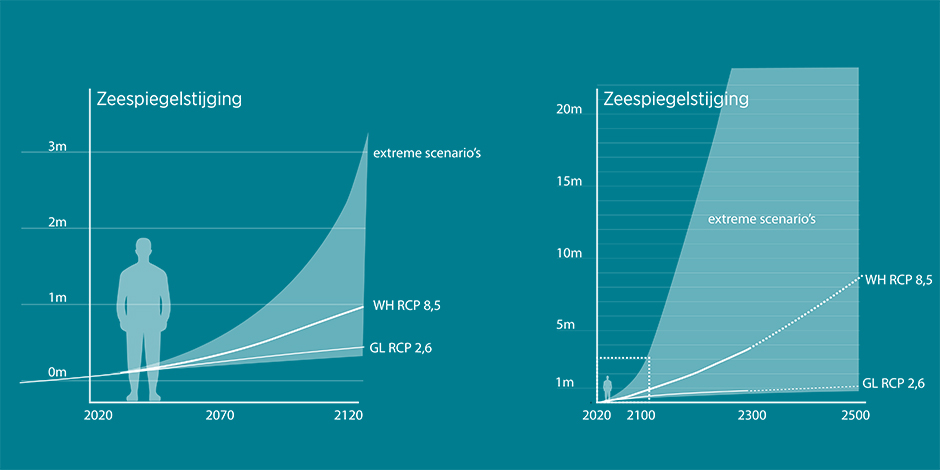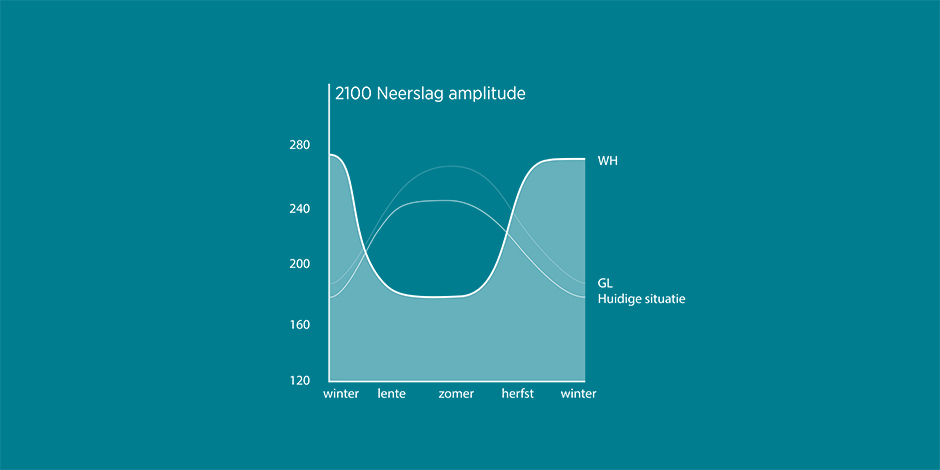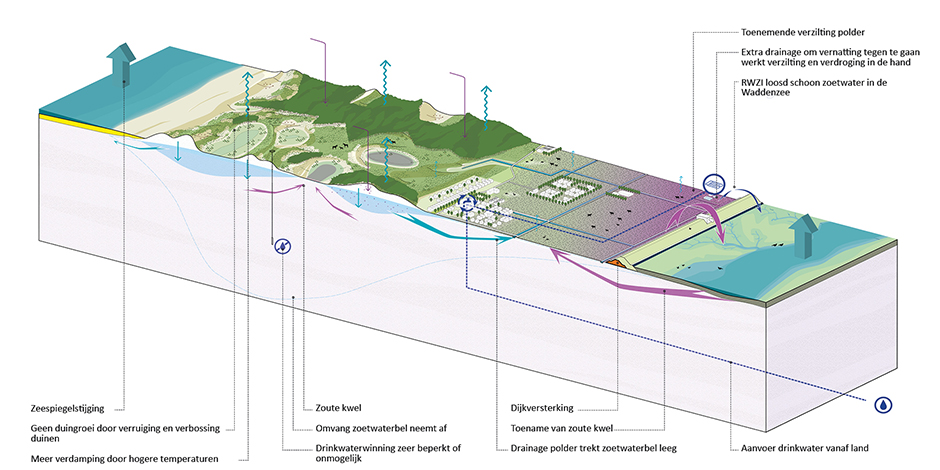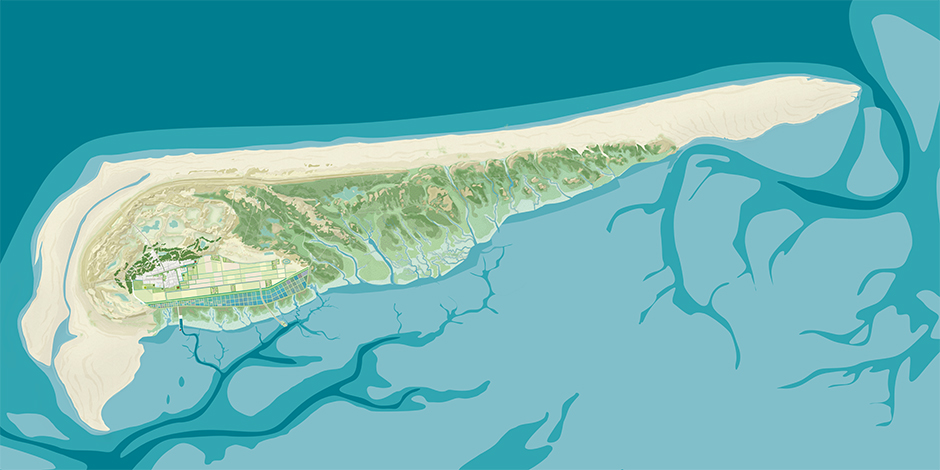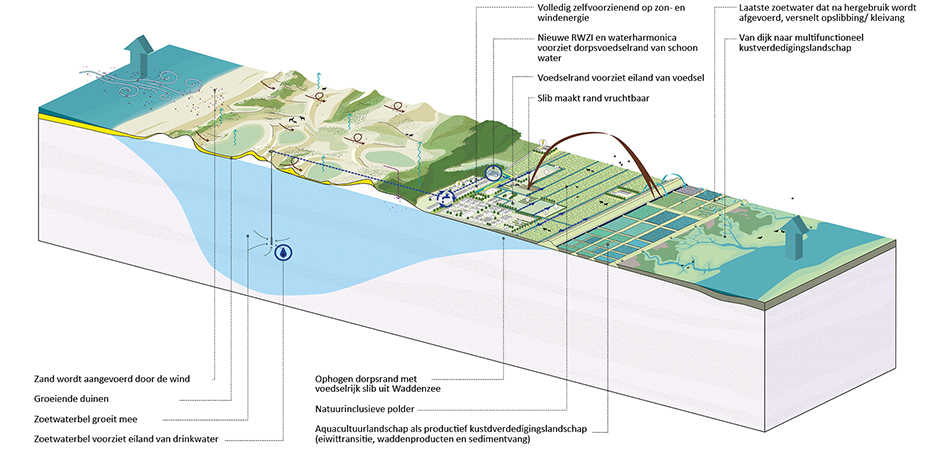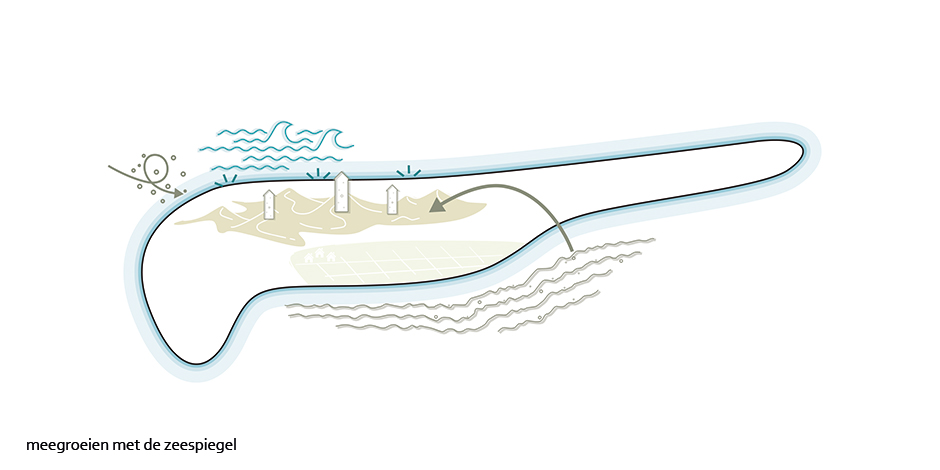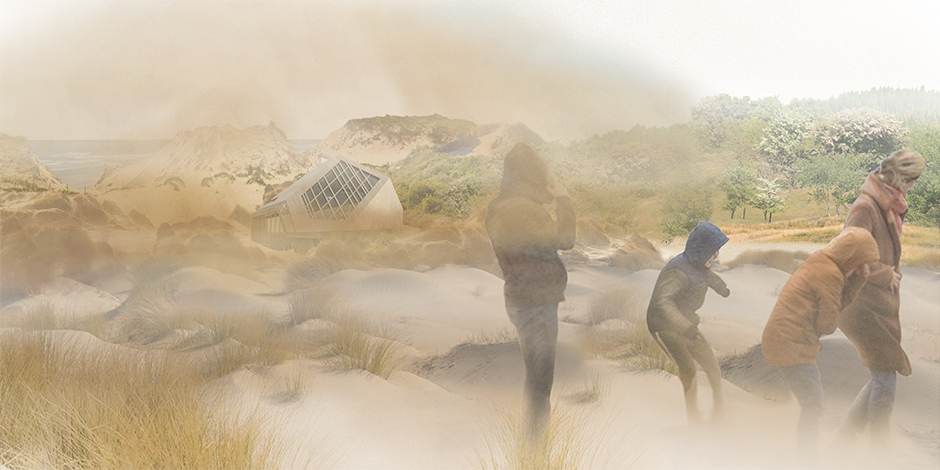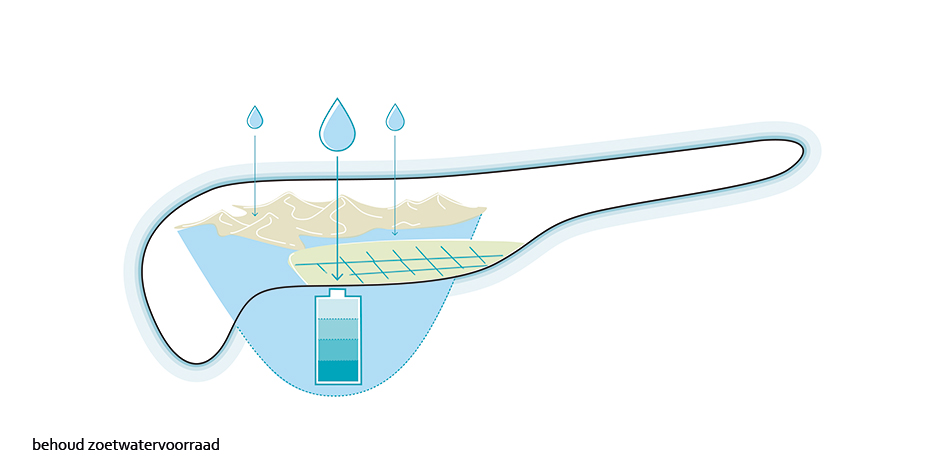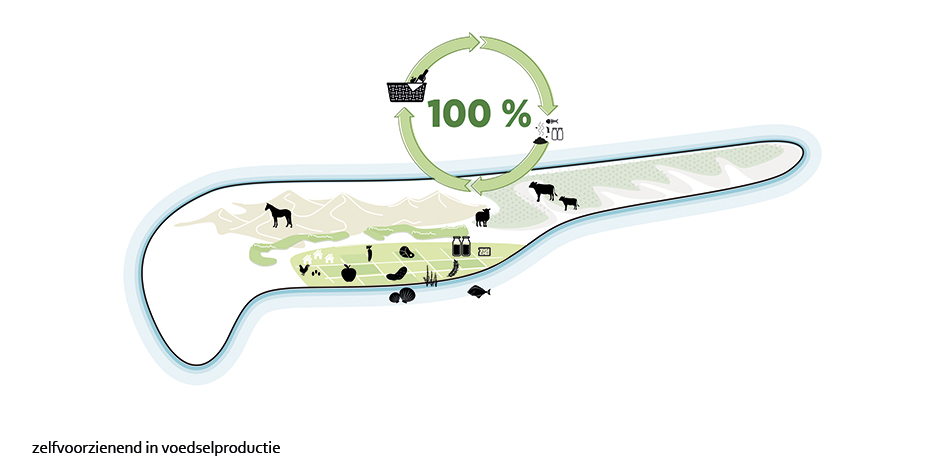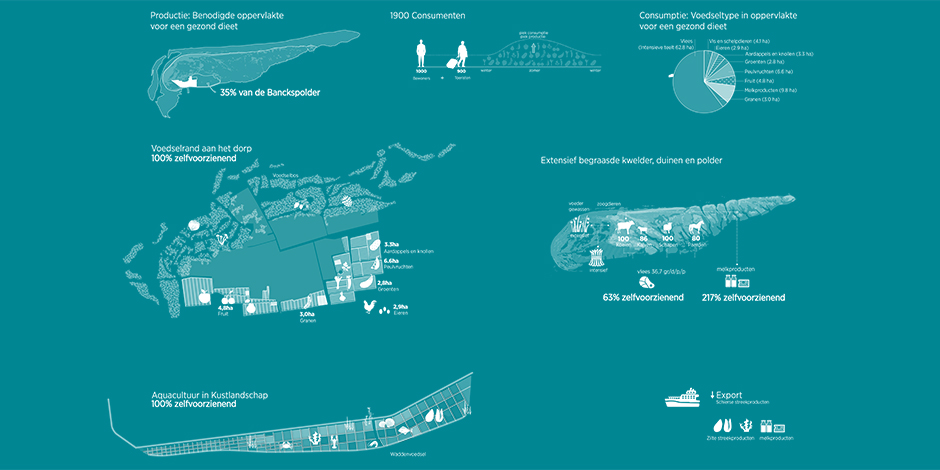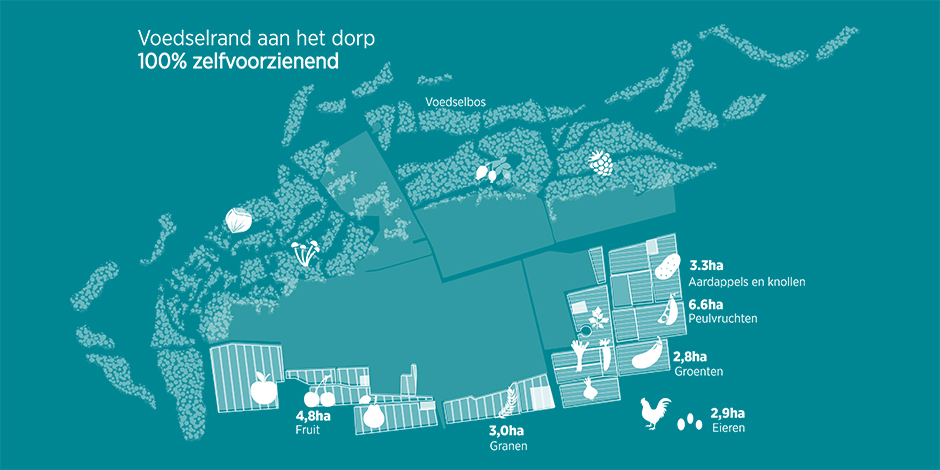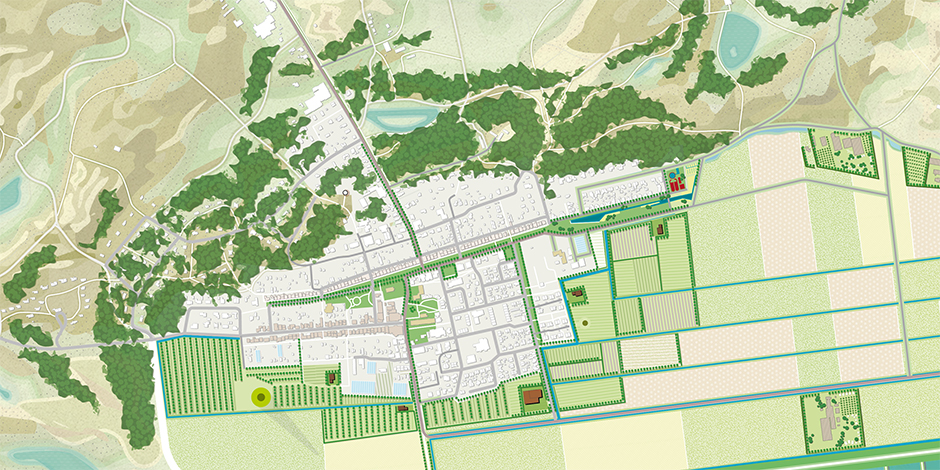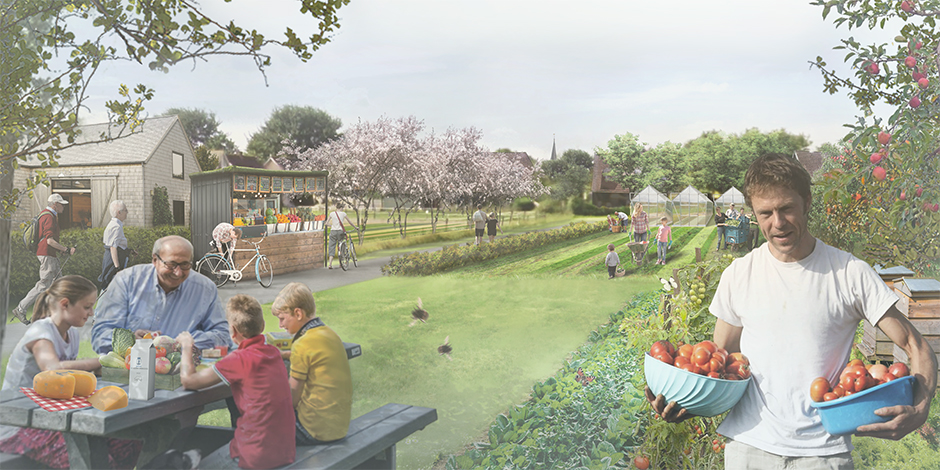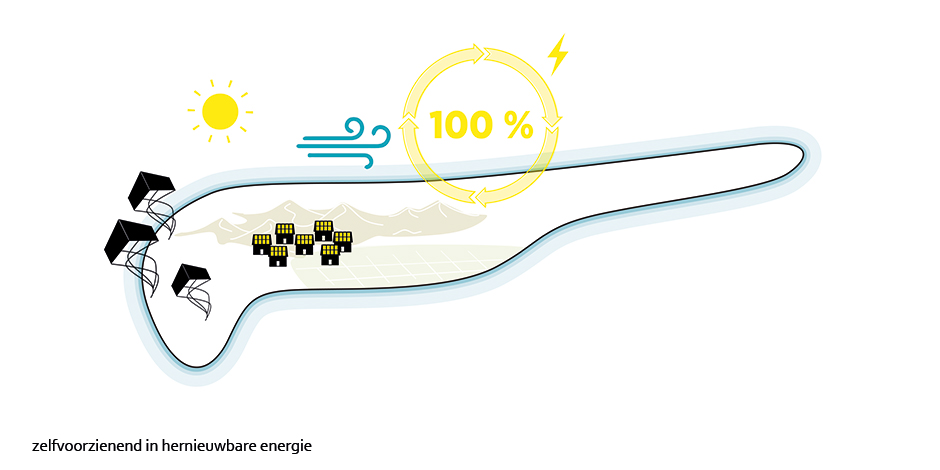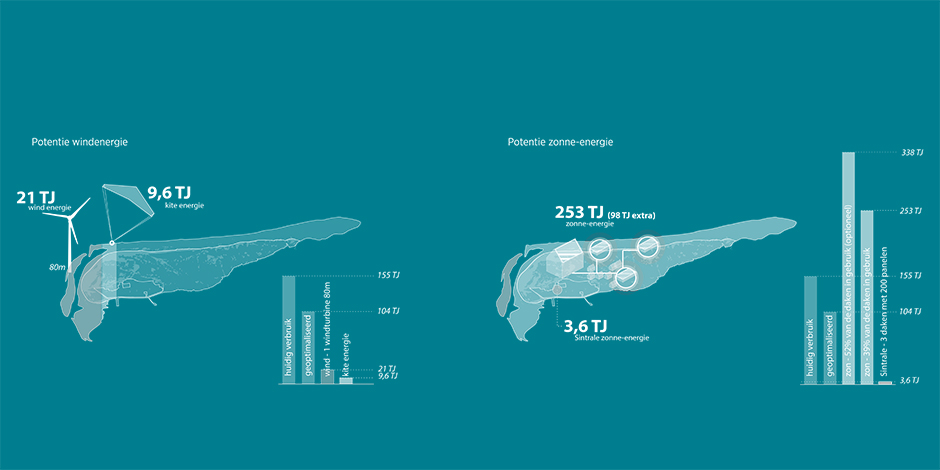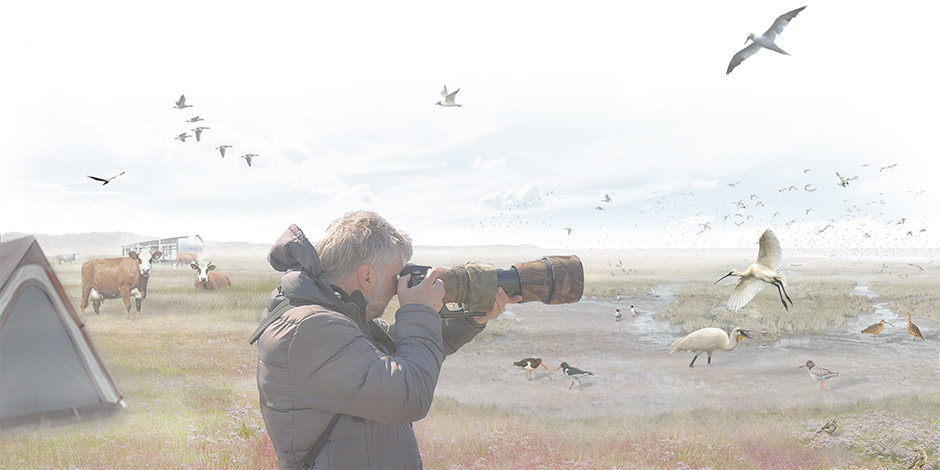SPONSLAND Schiermonnikoog
The sea level is rising and it is becoming drier and drier. How can the existing systems on the island respond to this? The biggest future problem for Schiermonnikoog concerns retaining and safeguarding fresh water. Dikes will also need to be adapted to the rising sea level. And could the island become self-sufficient in terms of food production and generating sustainable energy?
Towards a resilient and self-sufficient island
By allowing Schiermonnikoog to grow along with the rising sea level, it is able to adapt to the climate. When dunes can be raised again, the fresh water bubble can remain a stable size. With silt from the Wadden Sea, the polder can be raised, causing it to become more fertile and more resilient. A redesigned water system will retain surface water for longer and close cycles. Purified waste water is reused in dry periods for food production.
Solar panels on existing roof surfaces provide for the island’s energy requirements. In the winter, a kite is able to turn wind energy into electricity.
Simultaneously growing dune mass
The dynamics in the dunes is being restored. New replenishments can cause the dune mass to grow along with the rising sea level, thereby allowing more fresh water to be stored.
Reuse of sewage water
By relocating the sewage water purification plant to the dune side of the polder, the purified water can be used to grow food crops. A horticultural zone of 33 hectares will be located next to the village. The quantity of purified sewage water will be highest in the summer, just when the plants need it the most.
Village food edge
In order to provide food for tourists and residents alike, around 33 hectares of production land is required. Meat, dairy products, fish and shellfish are produced at different locations on the island.
Wadden edge
The reinforcement of the Waddendijk goes hand in hand with new, location-specific crops. The primary dam is being brought further inland. The old dike is being lowered and made resistant to flooding. The area between the dikes is being divided into plots for growing a wide range of products. Parts of the zone between the dikes is being used for clay extraction. Outside the old dike, there is a wide salt marsh landscape, a natural foreshore and a climate buffer. At the same time, this is becoming a soft entrance to the island.

